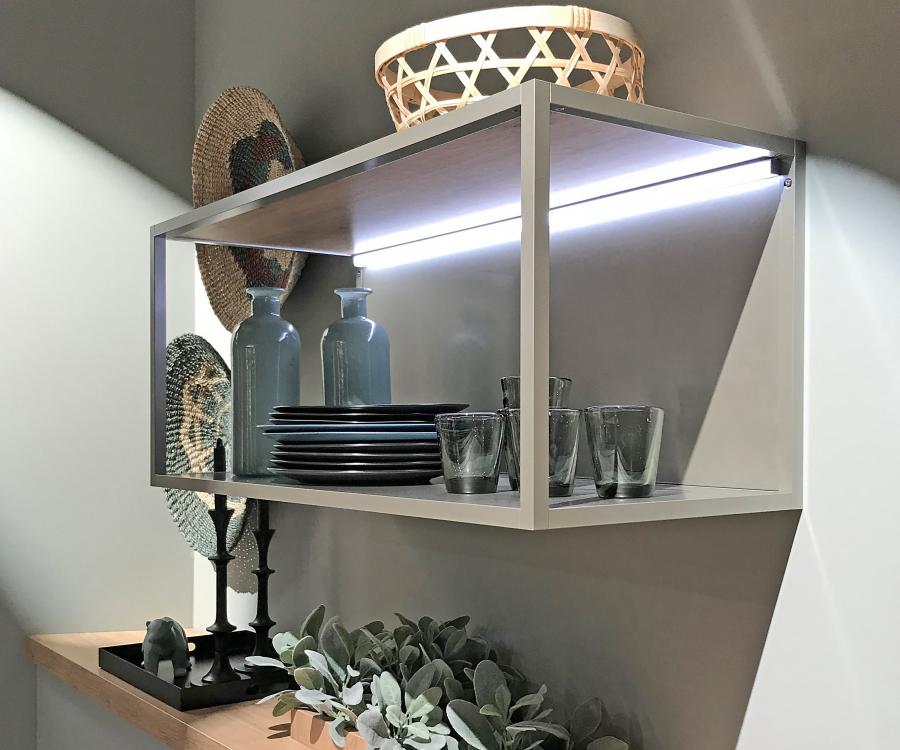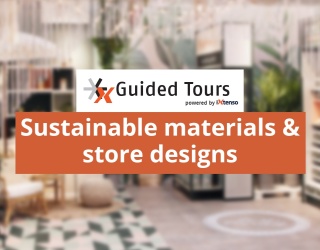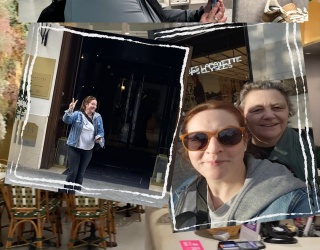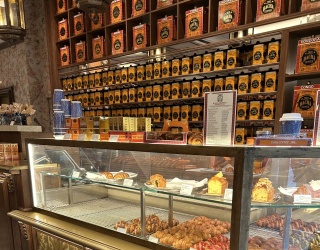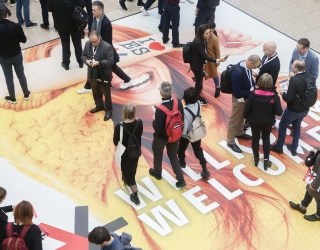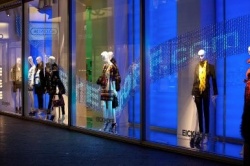
The first thing visitors saw at the EuroShop 2008 was a large curtain made of light emitting diodes. This year the diodes will once again write “Welcome“ and “Bienvenue“ in the entrance hall. LEDs will be an important trade fair topic. They are durable and very versatile, both in shop design as well as the facade outside. curveLED is one of several exhibitors who offer such installations. In our interview, Managing Director Thomas Tennagels explains what’s happening in the world of media facades.
The LED advertising space in the entrance to the EuroShop 2008 was by you. What has happened since then?
We have reduced the curveLED system, which until now had a pixel distance of 40 millimeters down to 20 millimeters. At the same time the curveLED ropes were reduced from 16 to 12 millimeters in outside diameter. With that we still have a high transparency of over 70 percent and still get quadruple resolution, so that we are able to also play back high resolution content. The second novelty is that the LED ropes have double-side use now and thus we have the ability to three-dimensionally install them into a space. In addition we have several special solutions for the outdoor area.
How can you also use the delicate advertising space in the harsh conditions of an outdoor area?
We designed a new outdoor aluminum profile. In this profile the SMD LEDs are arranged at a 20 millimeter pixel distance and are completely protected against external influences. The profile is only 9.5 millimeters wide, so it can also be mounted on glass facades without restricting the view of the observer from the inside. When assembling the profiles at 40 millimeters grid spacing, you achieve a transparency of over 80 percent and still have a high-quality video capable resolution.
This year LEDs will be a big trade fair topic at the EuroShop. What are the benefits of light emitting diodes?
LED has a huge advantage due to its long life cycle to where it even outperforms conventional energy-saving lamps by having five times their life cycle. In addition it is – as far as color mixture is concerned – unbeatable for use in the field of architecture due to its intense colors.
Have good old neon lamps now become obsolete for outdoor advertising?
I believe so, particularly since you now also are able to copy classic neon advertising with LEDs. The processing of LED systems in letters and writing is considerably easier and faster. LED modules are also getting less expensive and increasingly powerful.
What restrictions are there in towns for using advertising spaces with changing lighting effects?
This is different from town to town. Cities like Berlin are much more liberal in regards to temporary applications than other communities. Düsseldorf for instance has extremely tightened its lighting bylaws several years ago to prevent “light pollution“ which is very common in Asian cities. Many towns abroad also have already identified the problem and try to counteract uncontrolled LED wall increase. This is why it is very important to develop intelligent LED systems that adapt to their surroundings – video-capable systems as well as classic LED lighting. Like for instance the installation at the U-Tower (U-Turm) in Dortmund.
How elaborate is the control system for moving images on facades? Can video content be played back easily?
The feeding is very easy. The control is done through DVI or HDMI connector, just like with a conventional monitor, so everyone experienced with media can feed contents on their own.
Companies attach great importance to their corporate design. Can LEDs display all company colors equally well?
Of course – actually just as well as on a good quality LCD- or plasma display. A natural play back also depends on my surroundings, the ambient light, the contrast ratio and the color of other objects like a glass façade that’s located in the background. This is why it is very important for LED systems to have a high color depth of at least 32 bit. We all know this from a monitor. In addition I also need at least 7 bit (128 steps) for dimming to adjust the LEDs for instance to day- and night ambiences without losing color depth. Unfortunately, very few systems have this, so an optimal color rendering is not always guaranteed.
A look from the outside in: Do you also see a market in retail for large advertising spaces inside stores?
I think in the interior area, seamless LCD displays will increasingly assert themselves as advertising vehicles, because they are unbeatable in terms of price and resolution especially at a close viewing distance. Our LED systems for the interior in their 3-dimensional and organic forms are one-of-a-kind of course and hence offer a multitude of applications.
Which new products will you show visitors at the EuroShop 2011?
As I have mentioned already, we will offer several solutions for the outdoor area, which can be mounted in front of glass facades or on webbed fabric. We will also showcase our high resolution Flex-System, as well as a waterproof version.
What trends do you see in lighting? What do you expect from OLEDs for example in the next few years?
Unfortunately, I am not very much involved in the conventional lighting market. But I see at all trade fairs that LEDs are getting more and more powerful – in parts over 80 watt per LED – and that LED efficiency is also increasing. This means: more and more lighting is being replaced by LEDs also in the high performance area, for example gas discharge lamps in street lighting and store lighting. More and more frequently I also see OLEDs as panel lights, but they seem to still be too expensive.
Interview: René Schellbach, iXtenso.com


